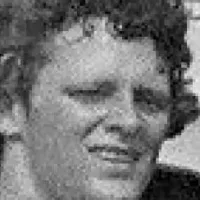A marathon is a long-distance foot race covering 42.195 kilometers (26.219 miles), typically run on roads, though trail routes exist. Participants can run, employ a run/walk strategy, or compete in wheelchair divisions. Over 800 marathons take place globally each year, attracting primarily recreational athletes, with some events hosting tens of thousands of runners.
1907: IOC Agreed on London Olympics Marathon Distance
In 1907, the International Olympic Committee agreed that the distance for the 1908 London Olympic marathon would be about 25 miles or 40 kilometers.
1908: London Olympics Marathon Course
In 1908, the London Olympic marathon course was 26 miles from Windsor Castle to the White City Stadium, followed by a lap of the track.
1908: Johnny Hayes' Olympic Victory Spurs Growth
Johnny Hayes' victory at the 1908 Summer Olympics contributed to the early growth of long-distance running and marathoning in the United States.
1909: Empire City Marathon and "Marathon Mania"
In 1909, races around the holiday season, including the Empire City Marathon on New Year's Day in Yonkers, New York, marked the early running craze referred to as "marathon mania".
1911: Fauja Singh's Birth Year
Fauja Singh's age could not be verified in 2011 due to the lack of a birth certificate from rural 1911 Colonial India.
1918: Marie-Louise Ledru completes marathon
In 1918, Marie-Louise Ledru has been credited as the first woman to complete a marathon.
May 1921: Marathon Standard Distance Set
In May 1921, the modern 42.195 km (26.219 mi) standard distance for the marathon was set by the International Amateur Athletic Federation (IAAF) from the length used at the 1908 Summer Olympics in London.
1921: Marathon distance standardization
In 1921, the marathon distance was standardized. Before this, the distance varied between races.
1924: Košice Peace Marathon held
In 1924 the oldest annual marathon in Europe, the Košice Peace Marathon, was held in Košice, Slovakia.
1926: Violet Piercy Officially Timed
In 1926, Violet Piercy was credited as the first woman to be officially timed in a marathon.
1934: Johnny Kelley's Top Five Streak Begins
In 1934, Johnny Kelley's consistent top-five finishes at Boston began, lasting until 1950.
1950: Johnny Kelley's Top Five Streak Ends
In 1950, Johnny Kelley's consistent top-five finishes at Boston ended, with a total of 15 times between 1934 and 1950.
1959: Arlene Pieper First Woman to Finish US Marathon
In 1959, Arlene Pieper became the first woman to officially finish a marathon in the United States, completing the Pikes Peak Marathon in Manitou Springs, Colorado.
1966: Bobbi Gibb Completes Boston Marathon Unofficially
In 1966, Bobbi Gibb completed the Boston race unofficially and was later recognized by the race organizers as the women's winner for that year.
1967: Kathrine Switzer Runs Boston Marathon Officially
In 1967, Kathrine Switzer was the first woman to run the Boston Marathon "officially" (with a number). Her entry was accepted through an "oversight", but she was treated as an interloper once the error was discovered.
1968: Bobbi Gibb recognized as winner of Boston Marathon
In 1968, Bobbi Gibb was later recognized by the race organizers as the women's winner of the Boston Marathon.
1972: Frank Shorter's Victory
Frank Shorter's victory in the marathon at the 1972 Summer Olympics spurred national enthusiasm for the sport.
1974: First Wheelchair Marathon
In 1974, the first wheelchair marathon was held in Toledo, Ohio, and it was won by Bob Hall at 2:54.
1975: Bob Hall Competes in Boston Marathon
In 1975, Bob Hall competed in the Boston Marathon and finished in 2:58, leading to the introduction of wheelchair divisions into the Boston Marathon.
1976: Estimated U.S. Marathon Finisher totals
In 1976, Running USA started to provide the estimated U.S. Marathon Finisher totals.
1977: New York City Marathon Bans Wheelchair Entrants
In 1977, the New York City Marathon banned wheelchair entrants, citing safety concerns.
1977: US National Wheelchair Championship
In 1977, the wheelchair race at the Boston Marathon was declared the US National Wheelchair championship.
1979: Division of Human Rights ordered the marathon to show cause
In 1979, the state Division of Human Rights ordered the New York City Marathon to show cause after it banned wheelchair entrants.
1980: Estimated marathon runners in the United States in 1980
In 1980, approximately 143,000 runners completed a marathon within the United States.
1980: Division ruled the New York City Marathon had to allow wheelchair athletes to compete
In 1980, the Division ruled that the New York City Marathon and New York Road Runners club had to allow wheelchair athletes to compete.
1981: Ban on wheelchair racers was not discriminatory
In 1981, the New York Supreme Court ruled that a ban on wheelchair racers was not discriminatory as the marathon was historically a foot race.
1982: Association of International Marathons and Distance Races (AIMS) Foundation
In 1982, the Association of International Marathons and Distance Races (AIMS) was founded.
1983: World Athletics Championships Marathon
In 1983, the marathon was included in the World Athletics Championships.
1984: Women's Marathon Introduced at the Summer Olympics
In 1984, the women's marathon was introduced at the Summer Olympics in Los Angeles. Joan Benoit of the United States won with a time of 2 hours 24 minutes and 52 seconds.
1986: Wheelchair Athletes Competing in the New York Marathon
By 1986, 14 wheelchair athletes were competing in the New York City Marathon.
1988: Death of Sy Mah
Sy Mah of Toledo, Ohio, a pioneer in running multiple marathons, passed away in 1988. He had run 524 marathons before his death.
1992: Johnny Kelley's Last Boston Marathon
In 1992, Johnny Kelley ran his last full Boston Marathon at the documented age of 84.
1996: Polytechnic Marathon Discontinued
The historic Polytechnic Marathon was discontinued in 1996.
October 1999: Heinz Frei Wins Men's T54 Marathon
On October 31, 1999, Heinz Frei (Switzerland) won the men's T54 marathon (for racers with spinal cord injuries) in a time of 1 hr 20 min and 14 sec in Oita, Japan.
2000: Christian Hottas
Christian Hottas is meanwhile the first runner who ever completed 2000 marathons.
2000: Official Wheelchair Division Added to New York City Marathon
In 2000, an official wheelchair division was added to the New York City Marathon.
2002: Hyponatremia study at the Boston Marathon
A study in the New England Journal of Medicine found that 13% of runners completing the 2002 Boston Marathon had hyponatremia and that women are more prone to the condition than men.
2002: Death of Dr. Cynthia Lucero during Boston Marathon
In 2002, Dr. Cynthia Lucero died at the age of 28 while participating in the Boston Marathon. She collapsed near mile 22 and was unconscious by the time paramedics reached her, and passed away two days later at the hospital.
2003: Ranulph Fiennes completes 7 marathons on 7 continents
In 2003, British adventurer Sir Ranulph Fiennes completed seven marathons on seven continents in seven days, despite having suffered a heart attack and undergoing a double heart bypass operation just four months before.
January 2004: IAAF Officially Recognizes World Records
On January 1, 2004, World records were not officially recognized by the IAAF, now known as World Athletics.
2004: Ernst van Dyk World Record
In 2004, Ernst van Dyk set the world record at 1:18:27 in the Boston Marathon wheelchair division.
2004: Patrick Finney regains the ability to walk
In 2004, Patrick Finney regained his ability to walk and eventually run after being unable to walk due to multiple sclerosis. He achieved this through extensive rehabilitation therapy and new medications.
2004: Oldest marathoner completing London Marathon
In 2004, a runner completed the London Marathon at the age of 93 years and 17 days, according to the Association of Road Racing Statisticians records. This runner was older than Gladys Burrill, who completed the 2010 Honolulu Marathon at the age of 92 years and 19 days.
2004: 2004 Summer Olympics Marathon
The marathon of the 2004 Summer Olympics was run on the traditional route from Marathon to Athens, ending at Panathinaiko Stadium. Stefano Baldini won with a time of 2 hours 10 minutes and 55 seconds.
2004: Marathon Medals Awarded at Closing Ceremony
The men's marathon medals were awarded during the closing ceremony of the 2004 Olympic games.
2005: Concerns about overconsumption of water during marathons
In 2005, Dr. Lewis G. Maharam, medical director for the New York City Marathon, stated that there are no reported cases of dehydration causing death in the history of world running, but there are plenty of cases of people dying of hyponatremia. Overconsumption of water during marathons can lead to exercise-associated hyponatremia, a dangerous dilution of sodium in the blood.
2005: Average marathon time in the U.S. in 2005
In 2005, the average marathon time in the U.S. was 4 hours 32 minutes 8 seconds for men and 5 hours 6 minutes 8 seconds for women.
May 2006: Budhia Singh banned from running
In May 2006, Budhia Singh, a young marathon runner from India, was temporarily banned from running by child welfare ministers due to concerns about the risk to his health. His coach was also arrested for child exploitation.
2006: Study of heart health and marathon running
A 2006 study of non-elite Boston Marathon participants revealed that runners who trained less (under 56 km weekly) were more likely to show heart damage. Runners who trained more (over 72 km weekly) showed fewer heart problems.
2006: IMMDA Recommendations on Fluid Intake
In 2006, the International Marathon Medical Directors Association (IMMDA) advised that fluid intake during marathons should be adjusted based on individual factors like body weight, sex, climate, pace, fitness level, and sweat rate. They also recommended sports drinks with carbohydrates and electrolytes over plain water and suggested runners drink when thirsty, but noted heat exposure can diminish thirst. Additionally, they recommend drinking small volumes of fluid frequently, about 100–250 ml every 15 minutes. They also provide guidance on how to treat hyponatremia in runners.
June 2007: Horst Preisler's marathon record
As of June 30, 2007, Horst Preisler of Germany had completed 1214 marathons plus 347 ultramarathons, totaling 1561 events at marathon distance or longer.
2009: Stefaan Engels breaks the record of Akinori Kusuda
By March 30, Stefaan Engels broke the existing record of Akinori Kusuda, from Japan, who completed 52 marathons in a row in 2009.
2009: Richard Donovan completes 7 marathons on 7 continents in under 132 hours
In 2009, Irish ultramarathon runner Richard Donovan completed seven marathons on seven continents in under 132 hours (five and a half days).
January 2010: Stefaan Engels' marathon challenge
In January 2010, Stefaan Engels started his attempt to run the marathon distance every day of the year. He had to switch to a handcycle due to a foot injury.
October 2010: Ricardo Abad Martínez runs 500 marathons in a row
From October 2010 to February 2012, Ricardo Abad Martínez from Spain ran 500 marathons in a row.
2010: Canadian study on marathon and heart function
According to a Canadian study presented in 2010, running a marathon can temporarily decrease the function of muscle segments in the heart, but full recovery is reached within three months. The study found that fitter runners experienced less of an effect. The marathon was held in 35 °C (95 °F) weather.
2010: Youngest woman to run a marathon in all 50 states
In 2010, Beverly Paquin, a 22-year-old nurse from Iowa, was the youngest woman to run a marathon in all 50 states. A few weeks later in 2010, Morgan Cummings (also 22) also completed a marathon in all 50 states and DC.
2010: Gladys Burrill completes Honolulu Marathon
In 2010, Gladys Burrill, a 92-year-old woman, completed the Honolulu Marathon in 9 hours 53 minutes, setting a Guinness World Record as the oldest person to complete a marathon. However, the Association of Road Racing Statisticians noted that she was the oldest female marathoner, as someone else had completed the London Marathon at an older age back in 2004.
February 2011: Stefaan Engels runs 365 marathons
On February 5, 2011, Stefaan Engels completed 365 marathon distances in 365 days.
September 2011: Brian Mills completes his 800th marathon
On September 17, 2011, Brian Mills completed his 800th marathon.
September 2011: Patrick Finney finishes marathon in each state
On September 25, 2011, Patrick Finney of Grapevine, Texas, became the first person with multiple sclerosis to finish a marathon in each state of the United States.
October 2011: Fauja Singh Finishes Toronto Waterfront Marathon
On October 16, 2011, Fauja Singh, then 100, finished the Toronto Waterfront Marathon, becoming the first centenarian ever to officially complete that distance.
2011: Boston Marathon fills capacity
In 2011, registration for the Boston Marathon filled to capacity within eight hours, highlighting the growing popularity of marathon running.
February 2012: Ricardo Abad Martínez runs 500 marathons in a row
From October 2010 to February 2012, Ricardo Abad Martínez from Spain ran 500 marathons in a row.
February 2012: Richard Donovan completes 7 marathons on 7 continents in under 120 hours
Starting on February 1, 2012, Richard Donovan improved on his previous record by completing the 7 marathons on 7 continents in under 120 hours (less than five days).
November 2012: Steve Edwards sets world record
On November 11, 2012, Steve Edwards set the world record for running 500 marathons in the fastest average finish time of 3 hours 15 minutes. He also became the first man to run 500 marathons with an official time below 3 hours 30 minutes at Milton Keynes, England. The records took 24 years to achieve.
2012: 2012 Summer Olympics Marathon Start and Finish
At the 2012 Summer Olympics in London, the marathon start and finish were on The Mall.
2012: Marathon Medals Awarded at Closing Ceremony
The men's marathon medals were awarded during the closing ceremony of the 2012 Olympic games.
February 2013: Larry Macon celebrates his 1,000th career marathon
On February 24, 2013, Larry Macon celebrated his 1,000th career marathon at the Cowtown Marathon in Ft. Worth.
May 2013: Christian Hottas completes 2000th marathon
On May 5, 2013, Christian Hottas became the first runner to complete 2000 marathons. He ran his 2000th at the TUI Marathon Hannover with a group of friends.
November 2013: Larry Macon sets Guinness World Record
On November 30, 2013, 69-year-old Larry Macon set a Guinness World Record for Most Marathons Run in a Year by a Man by running 238 marathons.
2014: Estimated marathon runners in the United States in 2014
In 2014, an estimated 550,600 runners completed a marathon within the United States.
2014: Athens Classic Marathon Course Record
In 2014, at the non-Olympics Athens Classic Marathon, Felix Kandie lowered the course record to 2 hours 10 minutes and 37 seconds.
2015: Chinese runners at the Boston Marathon in 2015
In 2015, 75 Chinese runners participated in the Boston Marathon.
2015: Harriette Thompson becomes the oldest woman to complete a marathon
In 2015, Harriette Thompson, a 92-year-old woman, completed the Rock 'n' Roll San Diego Marathon in 7 hours 24 minutes 36 seconds, becoming the oldest woman to complete a marathon. She was older than Gladys Burrill was when she completed her record-setting marathon back in 2010.
2015: Opportunity Rover Reaches Marathon Distance
In 2015, the Mars rover Opportunity reached the distance of a marathon from its initial landing spot on Mars. The valley where it reached this distance was named Marathon Valley and was subsequently explored by the rover.
2015: Median marathon times in 2015
In 2015, the men's and women's median marathon times were 4 hours 20 minutes 13 seconds and 4 hours 45 minutes 30 seconds, respectively.
December 2016: Christian Hottas completes 2500th marathon
On December 4, 2016, Christian Hottas completed his 2500th marathon.
2016: 2016 Summer Olympics Marathon Start and Finish
At the 2016 Summer Olympics in Rio de Janeiro, the marathon start and finish were in the Sambódromo.
2016: Marathon finishers in the United States
In 2016, Running USA estimated that there were approximately 507,600 marathon finishers in the United States, while other sources reported greater than 550,000 finishers.
2016: Risk of sudden cardiac death during marathons
In 2016, a systematic medical review found that the risk of sudden cardiac death during or immediately after a marathon was between 0.6 and 1.9 deaths per 100,000 participants.
2016: Marathon Medals Awarded at Closing Ceremony
The men's marathon medals were awarded during the closing ceremony of the 2016 Olympic games.
2017: Marathon races in China in 2017
In 2017, the number of marathon races in China increased to 400.
March 2018: Indoor Marathon World Records Set
In March 2018, an indoor Marathon occurred in the Armory in New York City. Lindsey Scherf (USA) set the indoor women's world record with 2:40:55 and Malcolm Richards (USA) won with 2:19:01 with a male indoor world record.
July 2020: Study on temperature and marathon performance
A July 2020 study found that increasing temperatures affected faster runners' performance more than slower ones.
2020: Marathon Medals Awarded at Closing Ceremony
The men's marathon medals were awarded during the closing ceremony of the 2020 Olympic games.
October 2023: Kelvin Kiptum sets world record
On October 8, 2023, Kelvin Kiptum of Kenya set the world record time for men over the distance with 2 hours and 35 seconds in the Chicago Marathon.
2024: 2024 Summer Olympics Records
At the 2024 Summer Olympics, Tamirat Tola of Ethiopia set the Olympic men's record at 2:06:26, and Sifan Hassan of The Netherlands set the Olympic women's record at 2:22:55.
2024: Hilde Dosogne runs a marathon every day of the year
In 2024, Belgian Hilde Dosogne ran a marathon every day of the year. On December 31, the 55-year-old ran her 366th and last marathon, setting a record for a woman.
April 2025: Data Correct as of April 2025
The data is correct as of April 2025.
Mentioned in this timeline
The United States of America is a federal republic located...
India officially the Republic of India is a South Asian...

Washington D C is the capital city and federal district...

Terry Fox was a Canadian athlete and cancer research activist...
Germany officially the Federal Republic of Germany is a Western...
China officially the People's Republic of China PRC is an...
Trending
8 months ago Maldives bans Israelis in solidarity with Palestinians amid Gaza conflict escalation.

3 months ago Brock Bowers' Injury Concerns: Raiders' Crosby Also Added to Injury Report

2 months ago Edison Upgrades South Pasadena Electrical Grid Amidst Storm Recovery, Lifting Evacuation Orders

John Stamos is an American actor and musician who rose to fame as Blackie Parrish on General Hospital earning a...

8 months ago Austin Hays emerges as a top Fantasy Baseball Waiver Wire pickup.

1 month ago Maxxine Dupri, assisted by AJ Lee, dethrones Becky Lynch for Intercontinental Title on Raw!
Popular

Tucker Carlson is an American conservative political commentator known for...

XXXTentacion born Jahseh Dwayne Ricardo Onfroy was a controversial yet...

Ben Shapiro is a prominent American conservative political commentator media...

Candace Owens is an American conservative political commentator and author...

William Franklin Graham III commonly known as Franklin Graham is...

Ursula Gertrud von der Leyen is a prominent German politician...